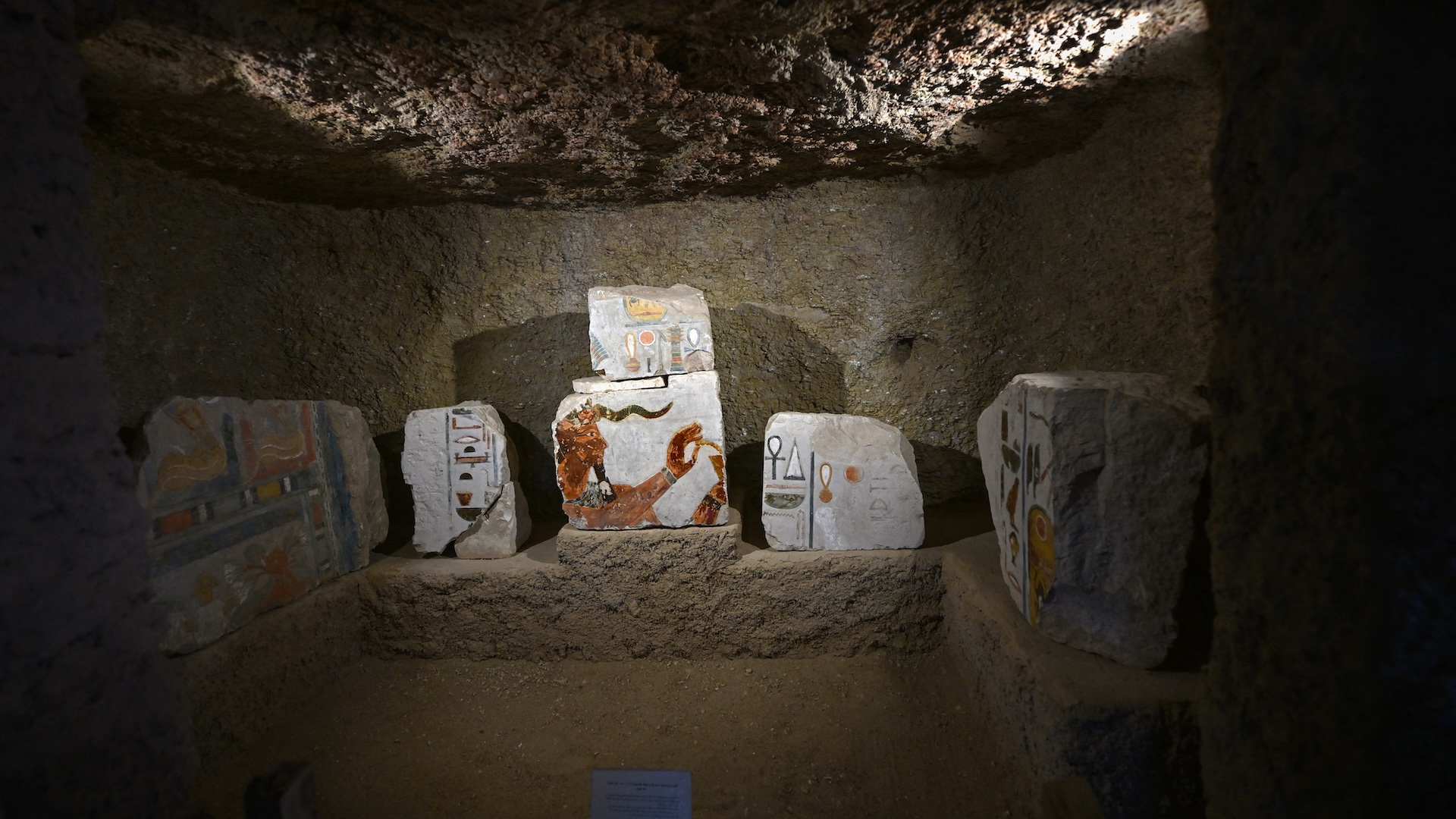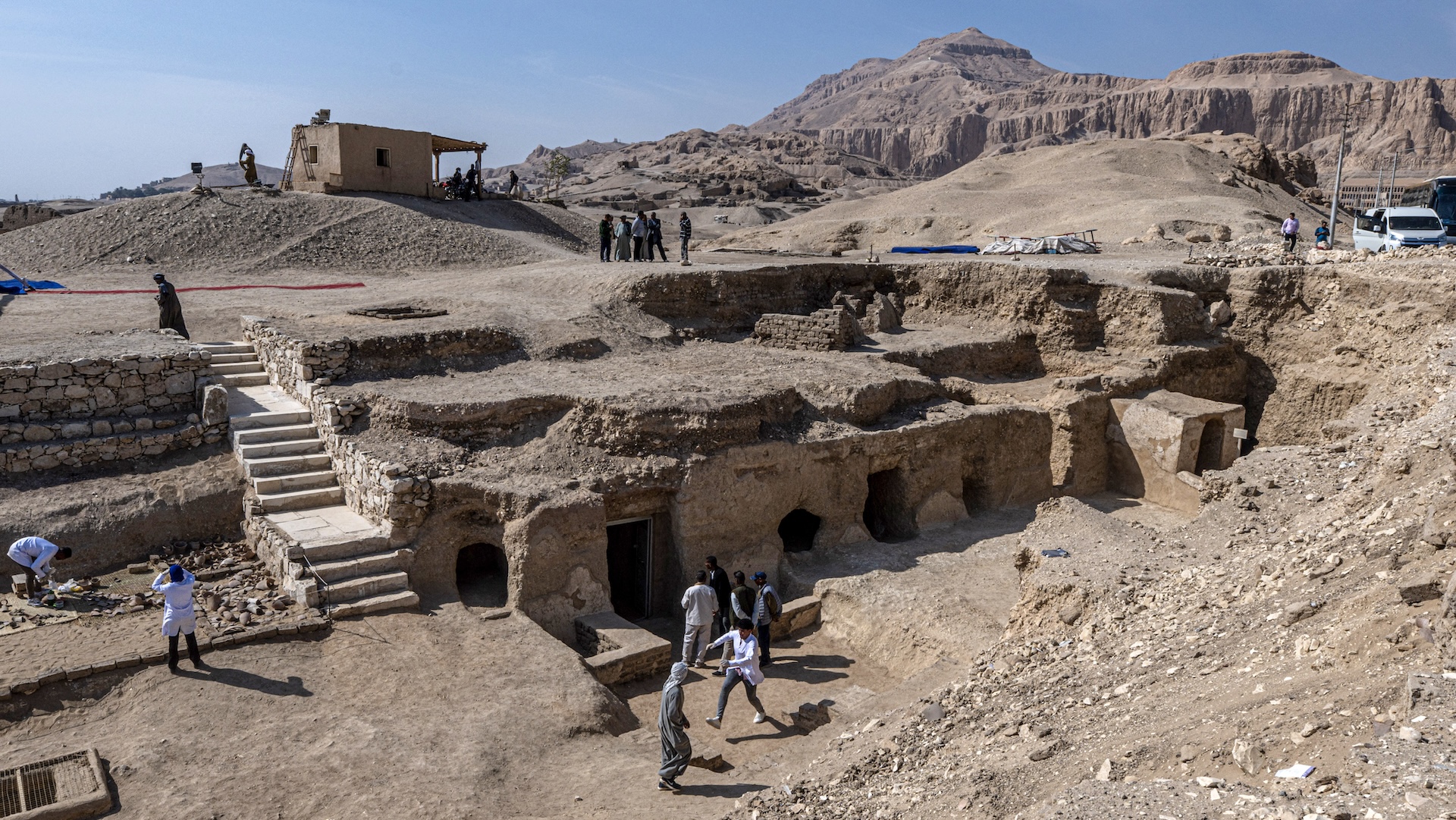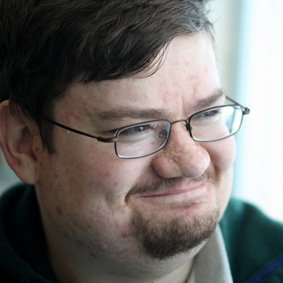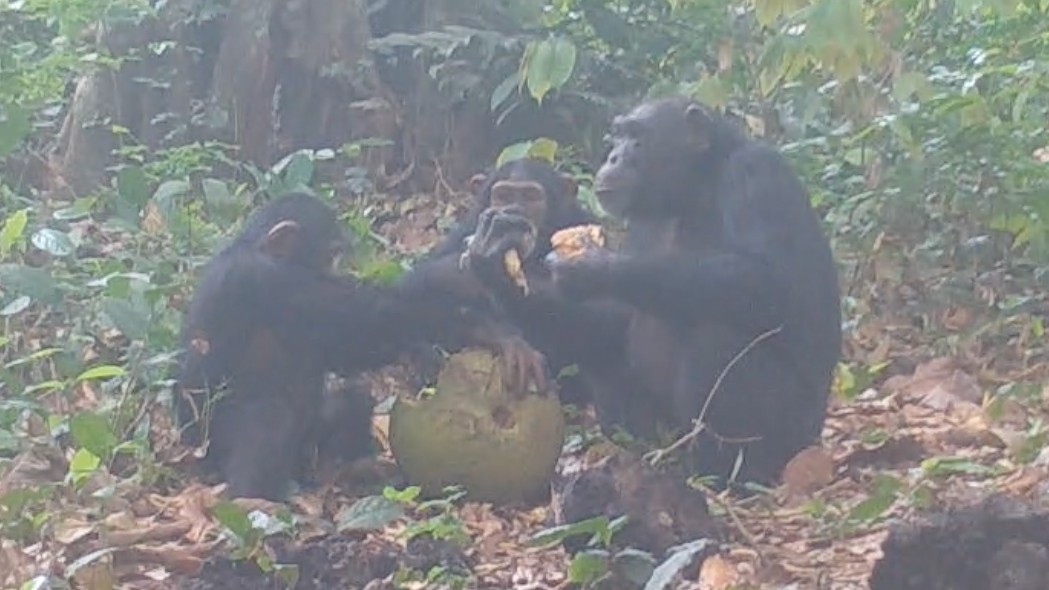Excavations at Queen Hatshepsut's mortuary temple reveal elaborate burials, decorated blocks and ancient tools
A number of new discoveries have been made near the mortuary temple of Queen Hatshepsut in Egypt.

Archaeologists working in Luxor, Egypt, recently made several discoveries in the area around Deir al-Bahari (also spelled Deir el-Bahari and Dayr al-Baḥrī), the famous mortuary temple built by Hatshepsut, a woman who ruled Egypt as a pharaoh.
The team found the temple's "foundation deposit" — objects that the ancient builders buried when they began construction of the temple. The artifacts found include an adze, a tool used to cut and shape wood; a wooden hammer; two chisels; a wooden cast model for making mud bricks; and two stones that contain Hatshepsut's cartouches, ovals with hieroglyphs that can represent a ruler's name, Zahi Hawass, a former head of Egypt's Ministry of Antiquities who is leading the excavation team, told Live Science in an email.
The mortuary temple was known as Djeser Djeseru in ancient times, and the adze, hammer, cast model and one of the chisels have inscriptions saying "the good god Neb Maat Re, in the temple Djeser Djeseru, beloved by Amun," Hawass said. Amun was the chief god of Thebes, which is now Luxor. The words "Neb Maat Re" refer to the name and some of the titles of the sun god Re (also known as Ra).
The team also uncovered 1,500 colorful stone blocks that were part of Hatshepsut's valley temple, which was located near her mortuary temple. The valley temple would have been decorated with a variety of scenes, some of which can still be seen on the blocks.
Hatshepsut was a female pharaoh who reigned from about 1473 to 1458 B.C, during the 18th dynasty. She was the stepmother of Thutmose III, who at times served as co-ruler and succeeded her after her death. Hawass said the team found evidence that Thutmose III restored Hatshepsut's mortuary temple sometime after her death. After the death of Hatshepsut, some of her statues and inscriptions across Egypt were destroyed but, in this case, Thutmose III sought to restore her temple.

Other finds in Luxor
The excavation team made a number of other finds in Luxor, including a cemetery dating to the 17th dynasty (circa 1635 to 1550 B.C.), when parts of Egypt were controlled by a foreign people called the Hyksos. Within the cemetery, the team found coffins holding the remains of ancient Egyptians. While excavating the cemetery, the team also found the remains of bows and arrowheads — weapons that would have been used to fight the Hyksos, Hawass wrote in a statement on Facebook. It's possible that some of the cemetery guards took part in the fight against the Hyksos.
Sign up for the Live Science daily newsletter now
Get the world’s most fascinating discoveries delivered straight to your inbox.
The team also found the tomb of Djehuty Mes, who was an overseer of the palace of Queen Tetisheri. There is some debate about which pharaoh she was married to, but Queen Tetisheri lived during the 17th dynasty and possibly into the early 18th dynasty. Inside the tomb, archaeologists discovered a limestone offering table, a limestone funerary stela (commemorative stone slab), and a cosmetics vessel made of alabaster and faience (glazed ceramic), Hawass said.
Aidan Dodson, an honorary professor of Egyptology at the University of Bristol in the U.K. who was not involved in the excavation, said, "For me, the most important is the discovery of the blocks from the valley temple of Hatshepsut." While "her main temple has been extensively excavated and studied since the mid-19th century," Dodson said, "the valley temple was only briefly examined by Howard Carter some 120 years ago."
Analysis of the team's discoveries is ongoing.

Owen Jarus is a regular contributor to Live Science who writes about archaeology and humans' past. He has also written for The Independent (UK), The Canadian Press (CP) and The Associated Press (AP), among others. Owen has a bachelor of arts degree from the University of Toronto and a journalism degree from Ryerson University.









